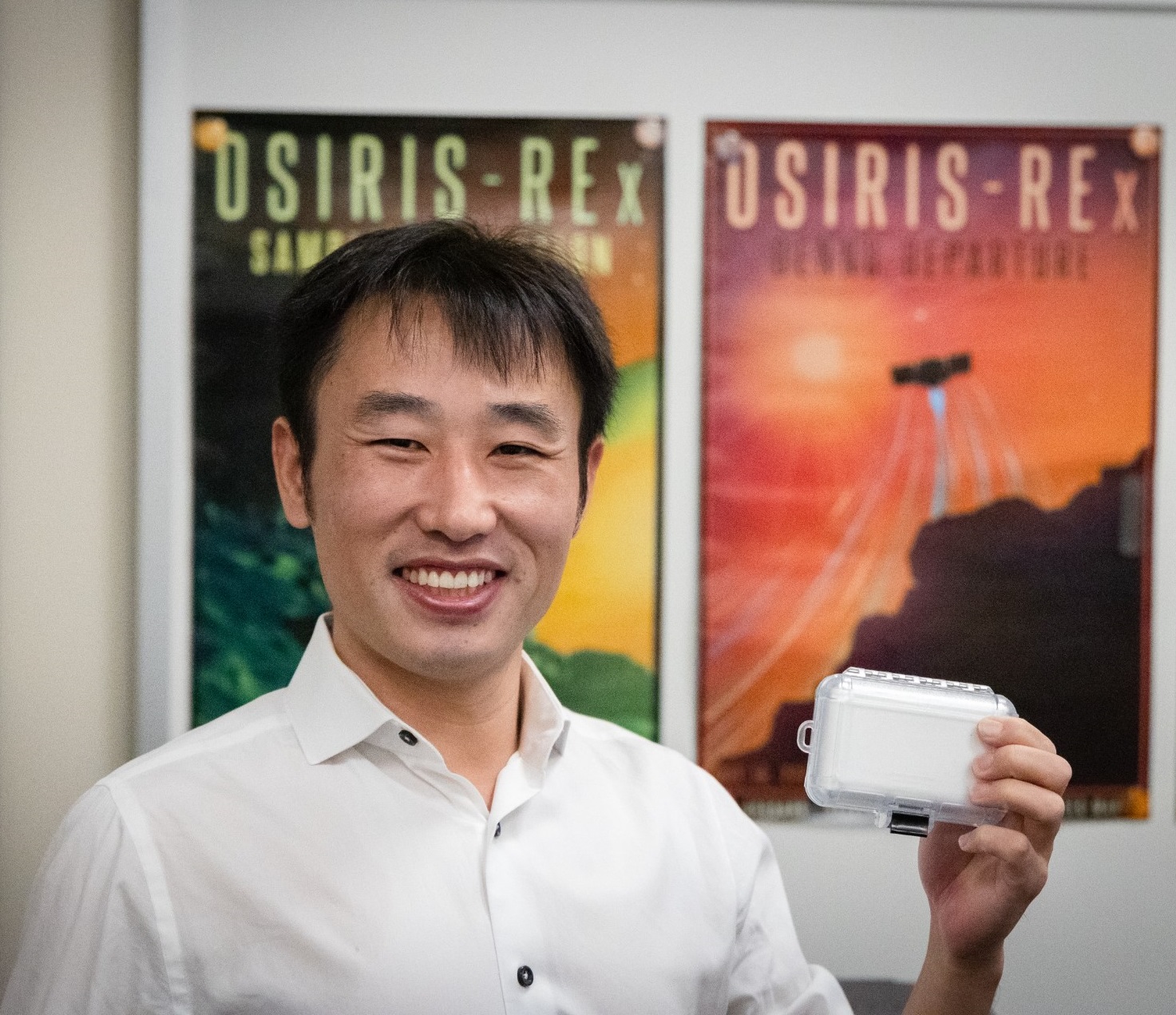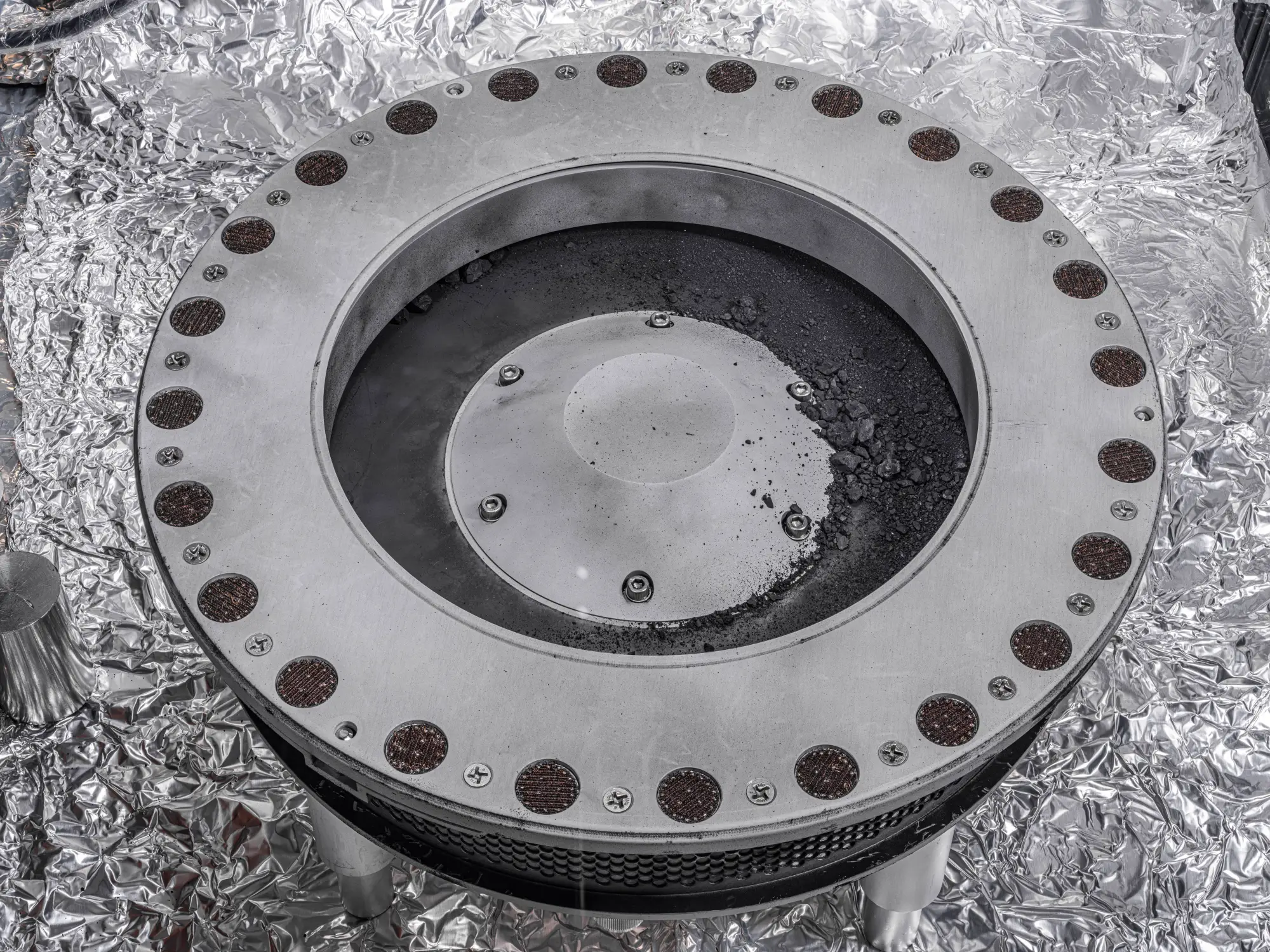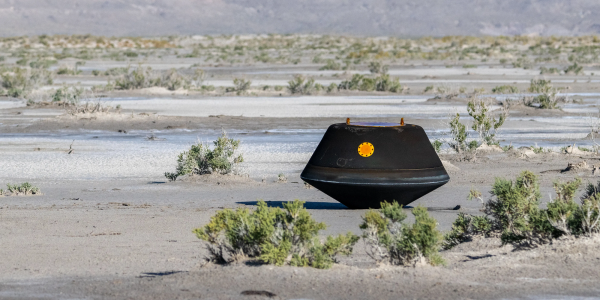After a seven year journey to asteroid Bennu and back, OSIRIS-REx brought samples back to earth, dropping them through the atmosphere on September 24.

On October 11, NASA announced that its early analysis of the 4.5-billion-year-old asteroid Bennu sample retrieved from space has revealed evidence of high-carbon content and water. These findings, when considered together, suggest the exciting possibility that the fundamental ingredients for life on Earth may be found within this celestial rock.
Concurrently, on the same day as this remarkable revelation, Bennu samples were delivered to Washington University in St. Louis for further in-depth analysis by three members of the McDonnell Center for the Space Sciences.

Kun Wang, associate professor of Earth, environmental, and planetary sciences, was chosen as part of NASA's OSIRIS-REx Sample Analysis Participating Scientist Program last year. Wang's research will focus on investigating the isotopic compositions of moderately volatile elements within asteroid Bennu and their implications for the asteroid's volatile depletion history. Staff scientist Piers Koefoed is working with Wang on the analysis of the Bennu samples.
"I am extremely excited to study this asteroid sample, which comes from the largest asteroid sample return mission in the world and the first one in the US," said Wang. "For the first time, we can study a pristine asteroid sample without any terrestrial contamination, unlike samples from meteorites. Since it was just revealed, we still know very little about this sample. I am super excited to find out what the sample actually is, which we are learning right now in the lab. It could surprise us. And we will find out very, very soon."

Ryan Ogliore, associate professor of physics, was also selected for the OSIRIS-REx Sample Analysis Participating Scientist Program as part of a team lead by Gerado Dominguez at California State University San Marcos. This team will analyze the Bennu samples at the smallest scales using a variety of nano-analytical techniques. Ogliore will analyze isotopes of tiny grains using the NanoSIMS to identify Bennu's "interstellar heritage" -- the components of the asteroid that formed before the birth of the Solar System. These measurements will make it possible to understand the interstellar component of Bennu and can compare it to meteorites from other asteroids, and cometary dust.
"I'm really excited to analyze Bennu at the nanoscale," said Ogliore. "This asteroid is a cosmic sediment and some of its smallest grains formed in the types of distant astronomical objects that we observe with telescopes. But instead of looking into deep space with telescopes, we are looking into deep time with microscopes, back before the Solar System was born."

Wang and Ogliore are grateful for the invaluable support extended to them by McDonnell Center for the Space Sciences, which has not only provided the necessary personnel but also essential instrumentation. These resources are instrumental in their efforts to develop the cutting-edge techniques required for the analysis of the Bennu samples.
While it is necessary to conduct further research to understand the nature of the carbon compounds detected, this initial discovery holds great promise for subsequent analyses of the asteroid sample. The secrets contained within the rocks and dust gathered from this asteroid will be studied for decades to come, offering valuable insights into the formation of our solar system, the possible seeding of precursor materials for life on Earth, and the precautions needed to avoid asteroid collisions with our home planet.
Header image: The sample return capsule from NASA’s OSIRIS-REx mission is seen shortly after touching down in the desert, Sunday, Sept. 24, 2023, at the Department of Defense’s Utah Test and Training Range. The sample was collected from the asteroid Bennu in October 2020 by NASA’s OSIRIS-REx spacecraft. Credits: NASA/Keegan Barber




